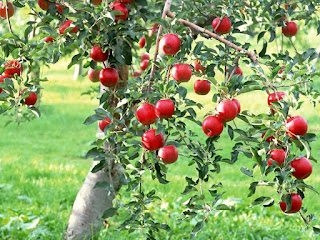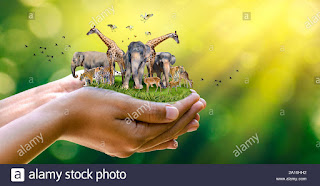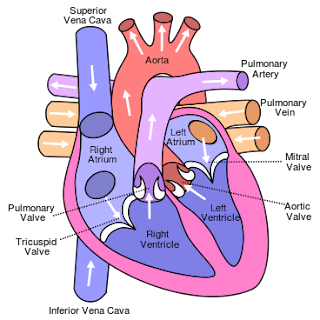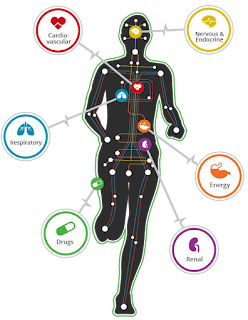Digestive System
Introduction
Do you know what happens to the food we eat.What will it do inside of our body? How it works? Do, you think it will go to the stomach. Yes, it is true, the food will go through a pipe called as esophagus and go's to the stomach. The human body is very interesting to study about. Lets, see more deeply into it.
Topics we will see:
- Digestive system
- How it works
Digestive System:
- Monogastric- single chambered stomach
- Ruminants- Grass eating animals and has 4 chambers in the stomach
- Pseudo Ruminants- 3 chambers in the stomach
- Avian Digestive System- 2 chambers in the stomach
Monogastric- Single Chambered Stomach
For example, humans are Monogastric animals, because we have only one chamber in our stomach.
- Mono- One
- Gastric- Related to the stomach
Digestion of Monogastric Animals
The digestion process will begin at the mouth and end at the anus. The teeth play an important role in masticating (Chewing) and breaking down the food. The salivary gland will help in producing saliva.There are three salivary gland.
Three salivary gland:
- Parotid
- Sublingual
- Submanidbular
The salivary glands will produces an enzyme called as amylase. The amylase will help in breaking down the starch in the food.
The food which is swallowed is called as bolus. The bolus will go into a pipe called as food pipe or esophagus to the stomach.
Fact:
- Do you think any digestion happens in the esophagus. If you say no, your correct. No digestion will happen esophagus.
When the bolus go's into the esophagus the shape of the esophagus will change because the food will need space to pass the food.The esophagus will push the food by contacting on the bolus. This will make the bolus to pass through the esophagus. This process will be called as Peristalsis.
Then, it will go to the stomach. When the bolus enters to the stomach, the bolus will mix with gastric juices. When it mixes with gastric juices it will reduce in size, the food mass will be known as chyme. In the gastric juices in the stomach there will not be only HCL, it will include Various protein breaking enzymes. So, breaking down of protein is the main function of the stomach.
Facts:
- The P.H level of HCL is 1.5 to 2.5
After the stomach, the bolus will go into the small intestine. The small intestine is a big tube, which will help in absorption of the bolus. The small intestine is divided into 3 parts.
3 Parts of Small Intestine
The first part of the Small Intestine is known as Duodenum. It is located between the stomach and the middle part of the small intestine, or jejunum. After, the food mixes with the stomach acid in the stomach, it will come into the duodenum. Where they mix with bile juice from the gallbladder and digestive juices from the pancreas. When chyme mixes with bile juice and digestive juices it will become as "Chyle".The absorption of vitamins, minerals, and other nutrients is taking place in duodenum.
Facts:
- Actually, the bile juice will be produced in the Liver. The bile juice will be stored in the gall bladder.
- Proteins - amino acids
- Fats - Fatty acids
- Glucose - Sugars
The second part of the Small intestine is the Jejunum. The main function of the jejunum is absorption of amino acids, fatty acids, and sugars.
The third part of the Small Intestine is the ileum.The main function of the ileum is to absorb vitamin B12, bile salts, and whatever food was not completed absorbed by the jejunum, will be adsorbed in ileum.
Villi:
- Villi is a small finger like structure, present in the small intestine.
- It's main function is Absorbing the food particles.
- Villi helps in gaining more surface area in the small intestine.
After the small intestine will adsorb the food, the food particles will spread through to the cells. The cells will break down the food. The glucose will be released. The cells will take the glucose for The cells will take the glucose. It will give energy for the body to do work. The cells will take the amount of glucose it needs and the extra food is stored as glycogen in the body.
After,the small intestine finished the absorption and digestion of the food particles. There, may be some undigested food particles. The undigested food along will go through the long intestine. The large intestine will absorb water, salts and minerals. The things which released by the anus is called as faeces. Before, the faeces will be removed from the body. The faeces will be stored in the rectum
Facts:
- The other name of Large intestine is known as Colon
- There are 4 parts in the large intestine.
- Ascending colon
- descending colon
- Transverse colon
- Sigmoid colon.
The point where the small intestine and large intestine meet is called as caecum.


























































